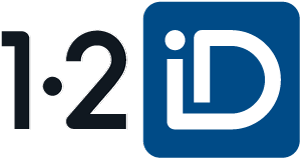Shaping the future of Digital Identity at 12iD
We’re thrilled to share that our CEO, Henrik Ringström, was interviewed last week by Temy, where he delved into his journey leading a pioneering tech company, 12iD. Temy is a reputed company in providing software development services for full-fledged companies and startups implementing their ideas into rewarding software solutions.
Hosted by Matthiew Wickman, the podcast covers some interesting topics. Here's a little sneak peek into what they discussed!
What is 12iD?
At 12iD we uniquely identify people. We've developed an application inspired by the Nordic solutions, tailoring it to create a highly scalable model. With venture capital support, our operations span offices in Sweden and Nepal. Our journey began in 2019.
Tell us a little bit about yourself. What do you consider your strongest attribute as a leader? Is there a defining characteristic that people would associate with you, saying, "Yes, that's Henrik Ringström"?
I’ll say I never give up, probably something people would know about me. I'm determined to see things through. With enough persistence, I believe almost anything can be achieved in the end.
Did you always have the desire to be an entrepreneur?
Not at all. My father worked for 40 years within international banking and my mother was an entrepreneur. In the beginning, I took more inspiration from my father and became quite a risk avert. I began my career in corporate finance and M&A, but then I pivoted when I found that I received better results and better performance when I had a more creative atmosphere, which entrepreneurship really provides.
Going back to 12iD, can you give us a general overview of the company and its mission to create a more secure, convenient, and inclusive digital world for individuals and businesses?
Certainly. Seven countries around the world, including the Nordic region, the Baltic, and Singapore, offer a unique identification system for their citizens. This not only enables digital self-identification but also integrates individuals into an ecosystem. This integration occurs not through the app itself but via the app connecting users to various companies.
While this concept has sparked inspiration beyond these specific territories, it's recognized as a very localized and non-scalable solution, leading to hesitancy in its implementation. Nevertheless, there's a shared aspiration to explore possibilities for building an ecosystem benefiting both society and its citizens. This includes, from a banking perspective, providing customers with the ability to reuse their identity to connect to different services.
The overarching goal is to establish an inclusive financial ecosystem in each country, ensuring that everyone has the opportunity to be financially included.
So, tell me, you also have offices in Nepal. Are there any specific advantages to operating in these two countries?
When we started with 12iD, we were trying to figure out where to expand our reach.
Our decision was guided by both digital and market perspectives. Although Nepal is a relatively small country in Asia, its population of 30 million is comparable to the combined size of all the Nordics. What captured our attention was the rapid digital transformation and high mobile penetration, making Nepal open to new technologies and implementations.
Given that our commercial model relies on payment per verification, we are inclined towards markets with a substantial population. Nepal served as a promising starting point, and we're also exploring opportunities in Bangladesh, Brazil, and other regions with similar potential.
In consideration of Sweden’s history of innovation and the banking legacy in identification solutions, how do 12iD solutions build on this heritage, and what sets them apart from other options in the market?
For instance, in Sweden, we use Mobile BankID, a local identification solution. Similarly, Norway has BankID, and Denmark has NemID. These solutions are quite similar, all relying on the same infrastructure, the PKI-based system. Typically, a bank would issue a certificate after verifying an individual, either physically or digitally. This certificate is stored on the user's mobile phone and can be used to identify them with a third party, such as an insurance company. However, there's a trust issue; the insurance company can't fully trust the individual because there might be alterations to the certificate. Moreover, this process involves a central database where certificates are received and compared, indirectly sharing parts of individuals' information among banks. This sharing of private information poses a concern, as everyone exchanges details about the individual.
In our approach, we use Ledger technology and zero-knowledge proof to verify users without accessing sensitive information. Algorithms verify the information, removing the need for us to handle sensitive data. This not only enhances security but also enables banks to implement the same solution in various countries without concerns about sharing sensitive information across borders.
What would you like your legacy to be?
I've always tried to discover what my true drive is. I believe it's my own motivation to know that I can actually create this. This is something I have accomplished, and no one else can take credit for it. So, I'd say that the legacy itself is just for me to know what I have created.
See the full interview here: Henrik Ringström: Shaping the Future of Digital Identity at 12iD - YouTube


